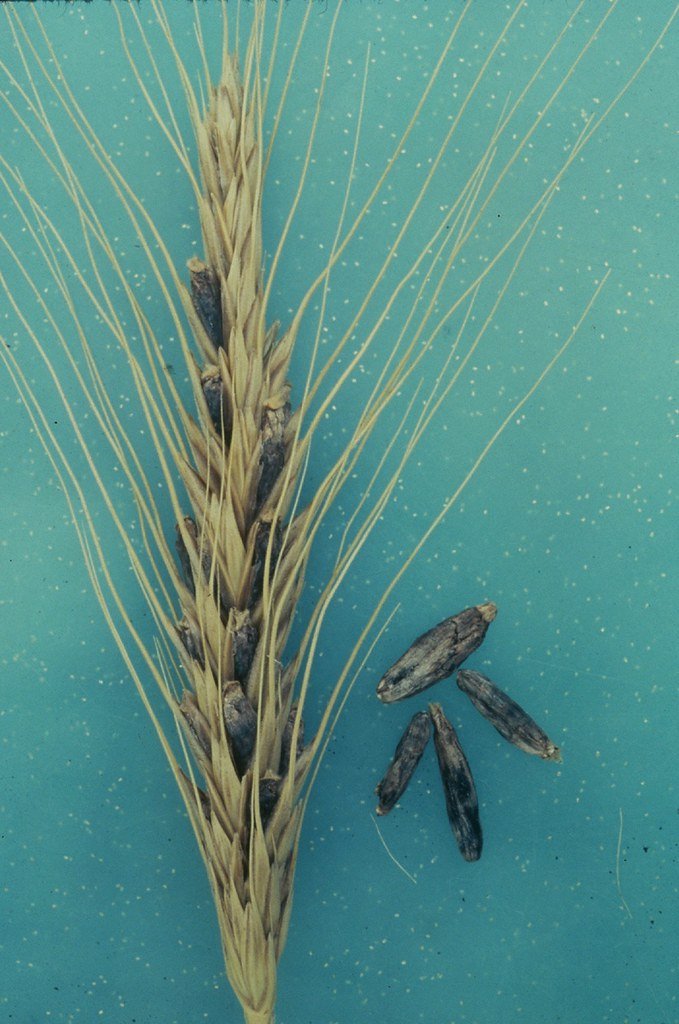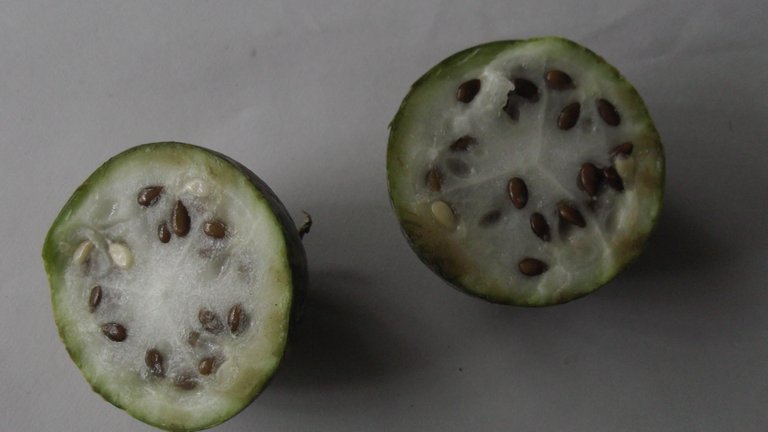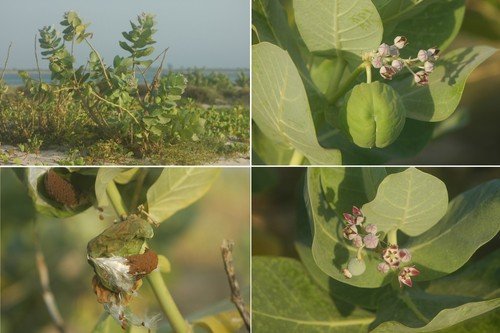[Toxicology] - Vegetable Poisoning (Bitter Apple, Ergot, Semecarpus Anacardium, and Calotropis)
While I was replying to a comment in my previous post, I wrote that as a child I was conversant with the Croton Tiglium plant. My dad called it Jayapala but the way he pronounces it doesn't like a Yoruba name. It is very interesting how non of his children ever thought of putting the seed in our mouth, although we usually see it as one of those flowers he had in his garden. So, I can imagine how many vegetable leaves, seeds, and products we might have come in contact with in our lifetime, and not know that they were poisonous or contained toxins. Let's continue with toxicology, exploring more Vegetable poisons. This time, we will be looking at Colocynth/Bitter Apple, Ergot, Semecarpus Anacardium, and Calotropis.
Colocynth/Bitter Apple is from the fruit Citrullus colocynthis and the Colocynth is the pulp that is removed from the seed. For easy understanding, so many of us in West Africa are familiar with the seed, as we cook with the seed. The pulp that houses this seed is extremely bitter. Its active principle is a glycoside known as Colosynthin. When taken fresh in its batter form, it can cause poisoning where the patient presents with abdominal pain, vomiting (Yellow), and stool which might be stained with blood. In severe cases, it can lead to collapse and death. It has been banned by the FDA in the United States. The fatal dose of colocynth is about 1 to 2 grams with a lethal period of 24 hours or more. The patient will show evidence of irritant poisoning on postmortem analysis.

Flickr
Ergot is a fungus sclerotium that grows on Rye, wheat, and barley. It is from the fungus Claviceps purpurea. Ergot is a purple-colored mass on the grain, and if ground to powder will poison the entire grounded grain. The active principles are Ergotoxine, Ergothamine, and Ergometrine. Its poison occurs in acute and chronic forms. Acute poisoning is rare, while chronic poisoning was common in the past as a result of consuming poisoned flour. Acute poisoning presents with symptoms such as throat irritation, dryness, thirst, nausea, vomiting, Diarrhea, Abdominal pain, hands, and feet tingling as a result of vasoconstriction, hemorrhages in the uterus, abortions, and cramps. Chronic poisoning (Ergotism) can present with gangrenes of the peripheries, gangrenes of the nose, ear, the intestine, hallucination, convulsion, and ataxia. The lethal dose of Ergot is about 1 to 10 grams with a fatal period of 1 day to several days. In acute cases, stomach wash is done, activated charcoal, and in chronic poisoning, the exposure is discontinued, then treatment will be done symptomatically and Vasodilators should be administered.
Semecarpus Anacardium or marking nut (fruit). The nut is black in color with a thick pericarp, while its juice is oily, acrid, and brown. The poisonous principle in Semecarpus Anacardium is semicarpol and bhilawanol. The poisoning of Semecarpus Anacardium depends on if it is ingested or contacted locally through lesions. If the nut is rubbed locally, it would cause irritation and blisters which are painful and contain acrid serum. The bruise could present like eczema which will ulcerate and slough. The juice can cause blisters in the mouth and throat if taken in a high dose. It can cause gastroenteritis, Dysnia, Cyanosis, Coma, tachycardia, and death. It has a lethal dose of about 5 to 10 grams, and a fatal period of 12 to 24 hours. The treatments are dependent on how the poisoning looks. if the nuts are ingested, then stomach washing is done, and when it is locally, it can be treated by the washing of the area with water and soap.
Calotropis is another plant that can be toxic. It exists in Calotropis gigantea which has a purple flower, and Calotropis procera which has white flowers. The Yorubas refer to this plant as Ewe Bomubomu. While the root is used for trado-medicine, it is also toxic. The toxic principles of the plant are Uscharin, Calotoxin, Calotropin, Calactin, and Calotropage. The leaves and stem of the plant produces a milky juice that contains trypsin when crushed which then forms an Acrid juice and clot. Its symptoms depend on how it was contacted. If it is via local contact, ingestion, or powdered snuffing. The juice will cause redness vesication, it can cause conjunctivitis if it touches the eyes. When snuffed, it leads to immediate death. When ingested, it can cause stomatitis, diarrhea, tetanic convulsion, and death. Treatment would include stomach wash for ingestion, demulcents, and treating symptomatically.
https://www.ncbi.nlm.nih.gov/pmc/articles/PMC8821906/
https://www.rxlist.com/colocynth/supplements.htm
https://www.webmd.com/vitamins/ai/ingredientmono-798/colocynth
https://smj.org.sa/content/smj/24/8/904.full.pdf
https://www.ncbi.nlm.nih.gov/pmc/articles/PMC6640538/
https://pmj.bmj.com/content/postgradmedj/42/491/562.full.pdf
https://www.pediatriconcall.com/poisoning-center/ergot/66
https://www.ncbi.nlm.nih.gov/pmc/articles/PMC1343691/
https://www.pediatriconcall.com/poisoning-center/semecarpis-anacardium/74
https://www.ncbi.nlm.nih.gov/pmc/articles/PMC3331355/pdf/ASL-8-106.pdf
https://globalresearchonline.net/journalcontents/v42-2/06.pdf
https://www.pediatriconcall.com/poisoning-center/calotropis/60



Thanks for your contribution to the STEMsocial community. Feel free to join us on discord to get to know the rest of us!
Please consider delegating to the @stemsocial account (85% of the curation rewards are returned).
Thanks for including @stemsocial as a beneficiary, which gives you stronger support.